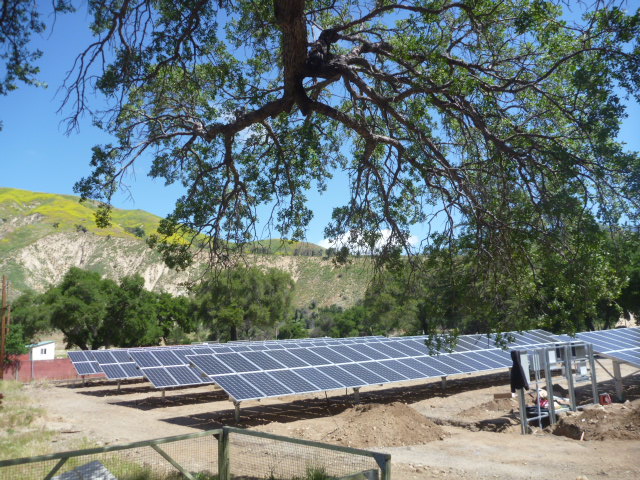
The U.S. Department of energy is awarding $78 million to 19 projects to expand access to reliable and affordable energy in rural areas. Made possible through the 2021 Infrastructure Investment and Jobs Act, the money will flow across 12 states and 13 Tribal nations for battery storage, electric grid improvements, renewable power sources and energy efficiency upgrades.
“Through these transformative investments, rural and remote communities from coast to coast are able to map a clean energy future that revitalizes local economies and cuts the pollution that is fueling the climate crisis and driving environmental injustice,” U.S. Secretary of Energy Jennifer Granholm said in a press release.
The investments are part of a $1 billion program for energy improvements in remote and rural areas. The program provides communities of 10,000 people or less with access to reliable electricity through projects that improve energy efficiency, stabilize grid infrastructure and invest in low-cost sources of energy including wind and solar.
About 97% of land across the United States is considered rural. People living in these communities sometimes do not receive as much attention for infrastructure needs as urban and suburban centers. The investment is an effort to assist communities that are “historically underserved,” and all 19 of the latest projects will be located “adjacent to disadvantaged communities that are disproportionally overburdened by pollution,” the DOE said.
The grants awarded by the DOE’s Office of Clean Energy Demonstrations range from $1.7 million to $5 million each. Ten projects include solar energy, while two include wind. Eight projects will build batteries so renewable energy can be stored for periods when the sun is not shining, and the wind is not blowing. Six projects will build self-reliant microgrid systems that safeguard the local power supply against large-scale outages, while another five will provide general improvements to existing electrical grid infrastructure. Four of the projects will provide energy efficiency upgrades, including one project that will install electric heat pumps as an alternative to gas-powered heating.
Receiving $5 million, the Adams Electric Cooperative Green Energy Project in Illinois will install a 1 MW wind turbine and 1 MW solar array to provide electricity for about 7,500 families. The project aims to revitalize an area affected by coal-mine closures while reducing greenhouse gas emissions by more than 40,000 tons annually.
Another $5 million project is in Oklahoma, where 2.1 MWh of battery energy storage and energy-efficient upgrades will be installed at seven buildings on the Choctaw Nation of Oklahoma’s Poteau campus, located within tornado alley. The battery storage will create a microgrid to provide backup power during outages for a health clinic, child development center, and food distribution center, allowing tribal members to receive vital services regardless of weather conditions. The energy efficiency improvements are expected to save the Choctaw Nation up to $140,000 in electricity costs each year.
In Colorado, $5 million will flow to a project called the Lake City Area Power and Resiliency Augmentation Enterprise. The funds will help replace 30 miles of aged overhead electric distribution lines to deliver reliable energy to rural communities in the Rocky Mountains. The service area has experienced 76 outages due to extreme weather conditions and wildfire threats in the last two years. The upgrades to the electric distribution infrastructure are intended to reduce operational and maintenance costs, allow more electricity to flow and prevent fires caused by overloading the wires.
Photo by Solar Array Project 2017
The post $78 million will support energy development in ‘historically underserved’ communities appeared first on Government Market News.
